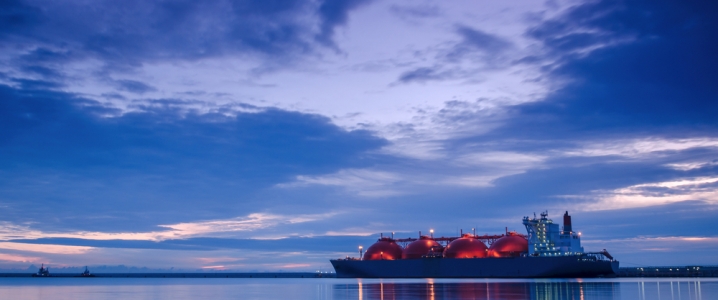Ice caps in the Arctic Circle are melting at an alarming pace, scientists and environmentalists warn. Global warming leads to larger amounts of ice caps retreating, opening more sea waters in the Arctic to ship navigation.
Waters navigable in more days in a year are an opportunity for energy buyers and sellers, especially in liquefied natural gas (LNG), to use the so-called Northern Sea Route that cuts the travel days from the Yamal LNG project in Russia to Asia in half compared to the Southern Sea Route via the Suez Canal.
This year, record temperatures in the northern hemisphere have contributed to more ice melting and the minimum extent of sea ice is expected to be among the top 10 lowest in four decades—since satellite records began.
This year volumes transported via the Northern Sea Route have increased, the reason being a rise in LNG exports from Russia, Sergei Balmasov, head of Murmansk-based consultancy Arctic Logistics Information Office, told Bloomberg.
According to Balmasov, while the number of voyages via the Northern Sea Route so far this year has been roughly the same as last year, the main difference compared to 2017 is LNG traffic out of the port of Sabetta, the port that Russia’s gas producer Novatek uses to ship the Yamal LNG cargoes to Europe and to Asia.
Arctic Logistics data compiled by Bloomberg shows that by early July, a total of 34 tankers made the voyage from Sabetta to Europe, and one to the east. Since early July, another two LNG tankers have shipped the fuel to Asia.
The Northern Sea Route enables vessels to reach Asia in 15 days via the Bering Strait, compared to 30 days via the conventional route through the Suez Canal, one of the minority partners in the Yamal LNG project, France’s Total, says. Related: Oil Prices Inch Lower As Rig Count Rises
In mid-July, Novatek said that it had shipped its first LNG cargoes from Yamal LNG to China via the Northern Sea Route, with the voyage from Sabetta completed in 19 days, compared to 35 days for the traditional eastern route via the Suez Canal and the Strait of Malacca.
“The Northern Sea Route ensures shorter transportation time and lower costs, which plays a key role in developing our hydrocarbon fields on the Yamal and Gydan peninsulas,” Leonid Mickhelson, chairman of Novatek’s Management Board, said.
With more ice caps melting in the Arctic in the summer, the shipping season in northern waters could start earlier and end later than in previous years, opening more days or weeks for ships to voyage on that route, cutting costs and reducing transportation time.
According to the Colorado-based National Snow & Ice Data Center (NSIDC), after declining rapidly in July, the decline of sea ice extent slowed in the first two weeks of August.
“Our 2018 projection for the sea ice minimum extent falls between the fourth and ninth lowest in the 39-year satellite record,” NSIDC says.
This summer, a heat wave swept across most of the northern hemisphere, and temperatures in northern Norway stayed well above average for weeks in July and early August. In Banak, in Norway’s far north, temperatures hit records of 90 degrees Fahrenheit, compared to its average maximum summer temperature of 62 degrees Fahrenheit.
Scientists attribute the faster Arctic ice melting and the heat waves to global warming and climate change. Environmentalists warn that more traffic on the Arctic shipping lanes will additionally contribute to the ice caps retreat because of the black carbon emissions whose warming effect is at least three times higher in the Arctic, says environmental group Clean Arctic Alliance. When ships burn fuel, especially heavy fuel oil, they emit the so-called black carbon, which absorbs heat and settles down on the ice and snow, speeding their melting. The International Maritime Organization (IMO) will be discussing banning the use of heavy fuel oil in the Arctic, while under its Polar Code, currently ships are encouraged not to use or carry heavy fuel oil in the Arctic.
At any rate, the retreat of the ice caps in the Arctic is opening a wider shipping lane for energy trade.
By Tsvetana Paraskova for Oilprice.com
More Top Reads From Oilprice.com:
- New Crude-By-Rail Service Aims To Ease Permian Bottlenecks
- Production Growth In The Permian To Hit New Record
- Germany Lags Behind In Battery Race


















